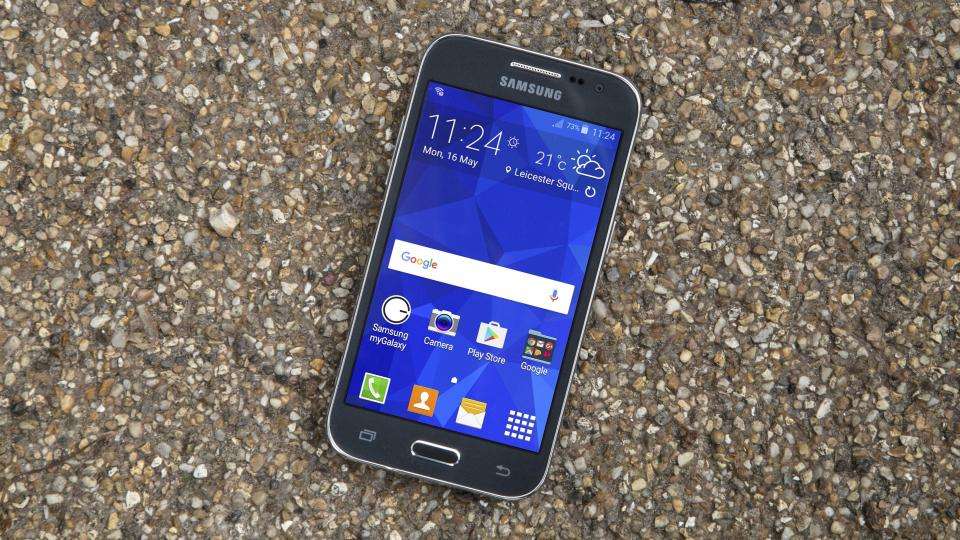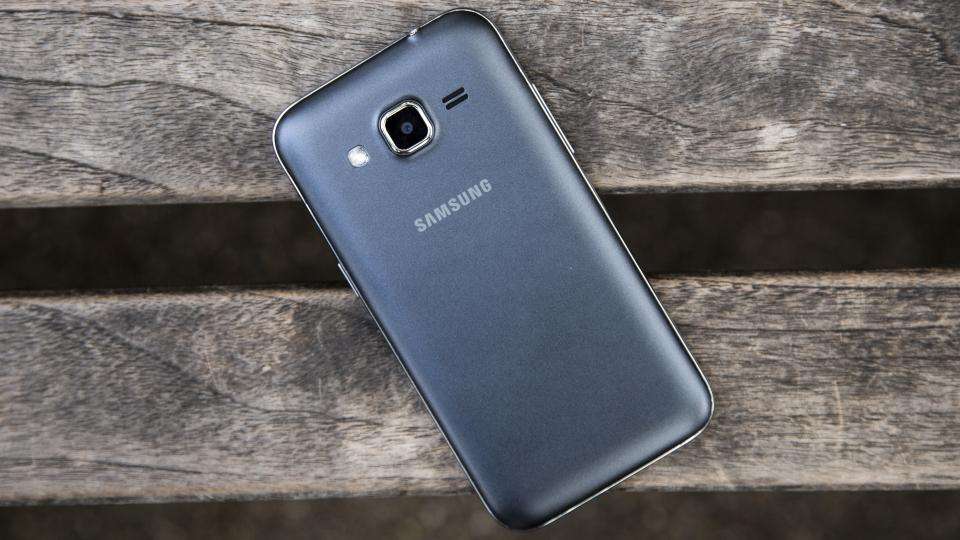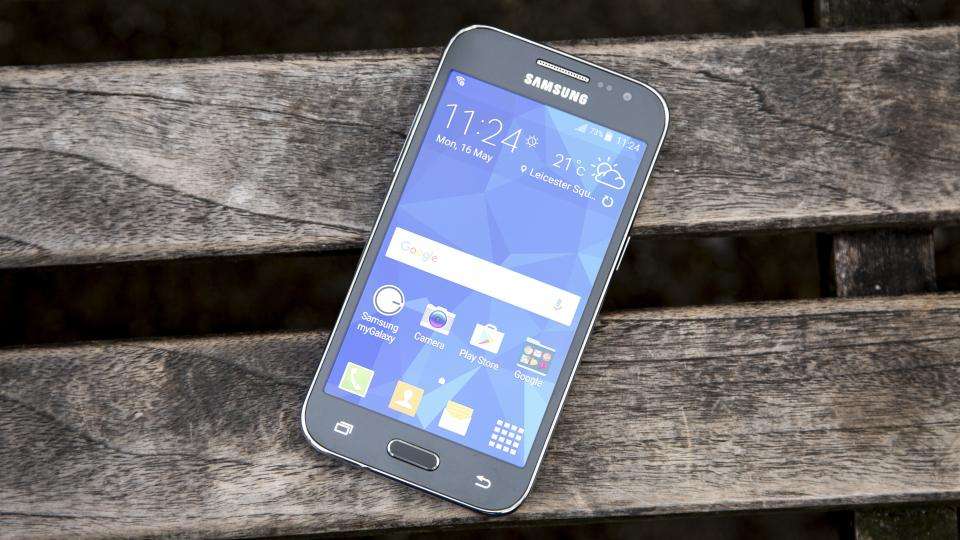It's always buying a budget smartphone when another is just around the corner. Even till this day, the 3rd Gen Moto and the newer Moto G4 provide touch competition to all budget smartphone manufacturers - as they both provide excellent value for money.

The Samsung Galaxy Core Prime feels reasonably well-made, and it's certainly no less attractive than the Samsung's Galaxy J5 , but it disappoints almost from the moment you turn it on.

Samsung Galaxy Core Prime review: Display
With a resolution of just 800x480, its 4.5in display pales in comparison to the 3rd Gen Moto G's 5in, 1,280x720 screen, and you'll see noticeably jagged edges around text and app icons on the main home screen. This kind of resolution might have been acceptable a year ago, but when so many budget phones now have screens with 1,280x720 resolutions, anything less really starts to show its age. Even the £80 2nd Gen Moto E has a 960x540 resolution, so to specify something lower just seems mean.
The screen itself is also one of the worst I've tested in recent months, as it's only able to display 58.9% of the sRGB colour gamut. That's even less than the rather mediocre Galaxy J1 , and it leaves a lot to be desired when looking at photos and images. Admittedly, a contrast ratio of 1,021:1 provides a decent amount of detail, but its viewing angles are pretty poor, as darker areas of the screen will immediately start turning a different colour as soon as you rotate the handset to either side.

This makes it quite difficult to see what you're looking at, as even the slightest hand movement can throw it off. Likewise, with a max brightness of 378.59cd/m2, you may struggle to see the screen clearly in bright sunshine unless you're looking at it in the shade, which only makes it even more of a pain to use day-to-day.
Samsung Galaxy Core Prime review: Performance
This is a shame, as it's actually one of the faster budget handsets I've tested recently. Instead of using one of Qualcomm's Snapdragon chips for the Core Prime, Samsung's decided to use a quad-core 1.2GHz Marvell PXA 1908 chip instead, which actually beat the 3rd Gen Moto G in our Geekbench 3 tests.
In the single core test, for instance, the Core Prime scored 574, just edging in front of the Moto G's 532, and its 1,704 result in the multicore test was even further out in front, beating the Moto G's score of 1,598 by more than 100 points. As a result, Samsung Android 5.1.1 TouchWiz interface zipped along at a pretty decent pace, and I didn't feel like I was left waiting too long when opening apps and navigating the menu settings.
However, the Core Prime is rather less capable when it comes to playing games. It can still play simple games like Threes! without much trouble, but even more action orientated 2D games like Bushido Bear were a bit juddery in practice, so you'll probably want to look elsewhere if you want a phone for playing games on. More complex games like Hearthstone are also completely out of the question, as the Core Prime managed just 44 frames (or 0.7fps) in the offscreen Manhattan 3.0 test in GFX Bench GL. This is admittedly a very demanding test, but even the Moto G managed 105 frames (1.8fps), which leaves the Core Prime feeling distinctly underpowered by comparison.
The Core Prime was also rather jerky when browsing the web, particularly when it had to deal with loading multiple images and adverts on a single page. This isn't surprising given its rather low Peacekeeper score of 507, but scrolling was naturally much smoother once pages had loaded properly. Continues on Page 2
